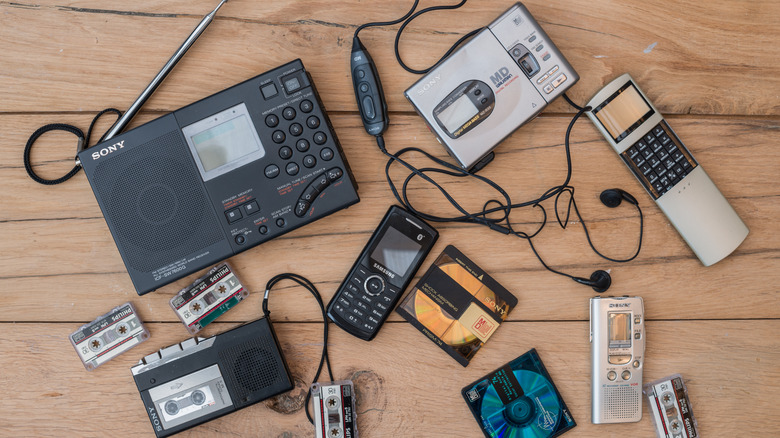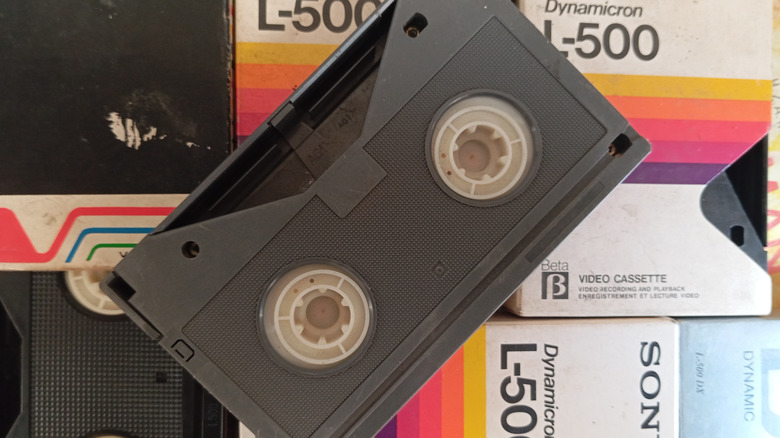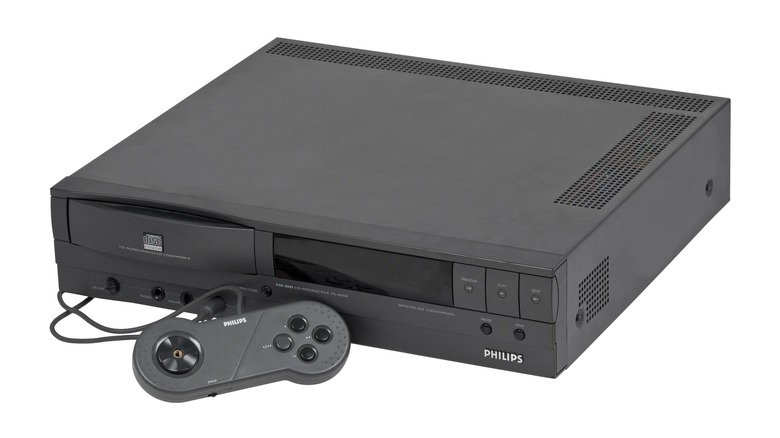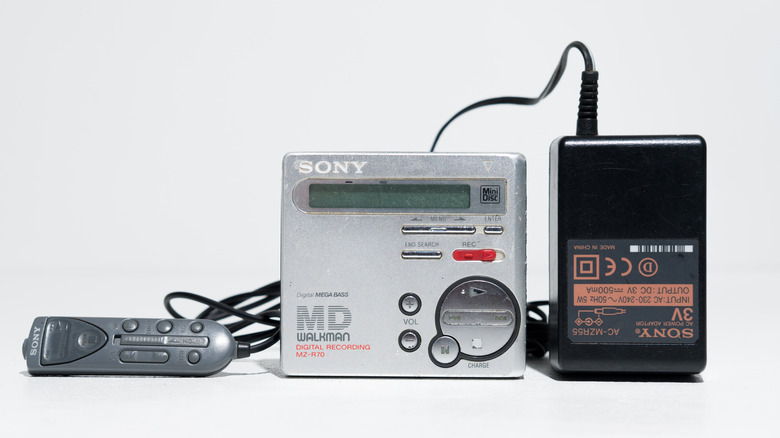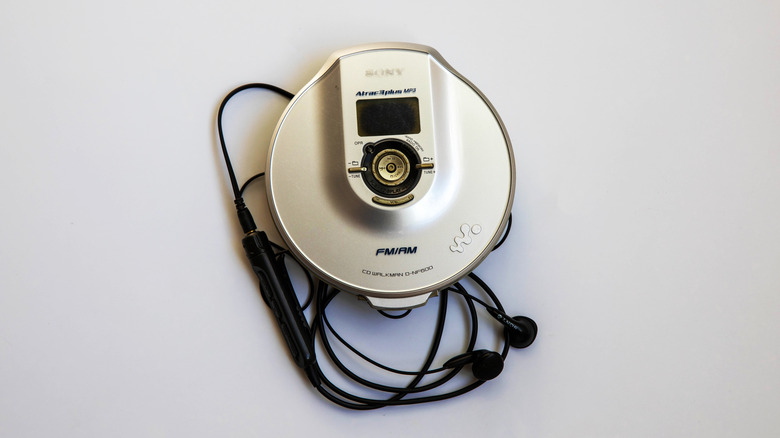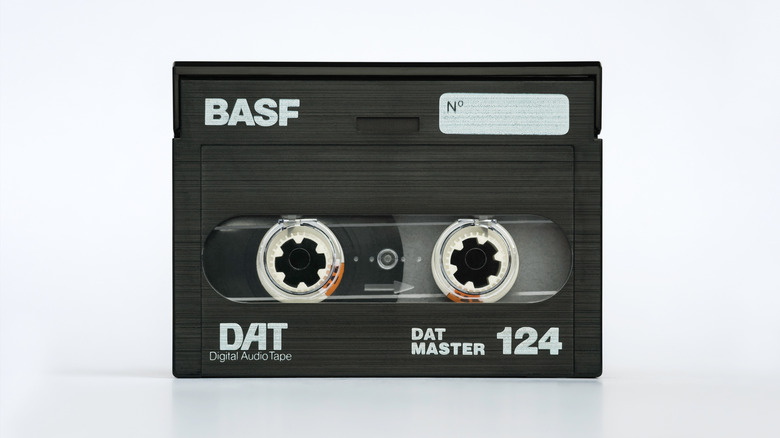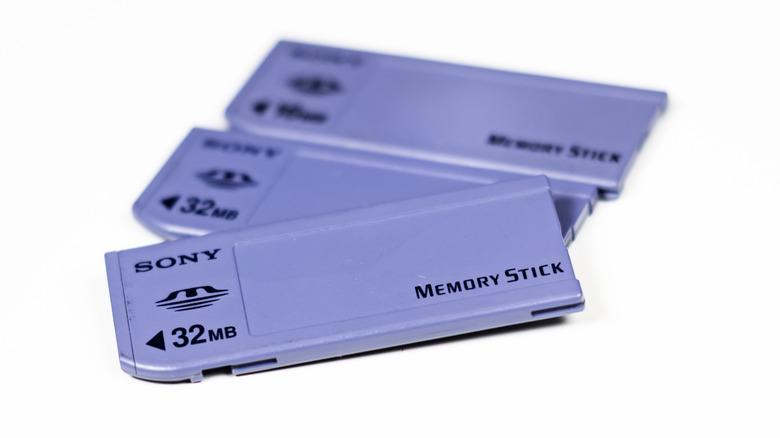6 Discontinued Sony Formats (And Why They Failed)
Sony, as one of the biggest and most successful electronics and technology companies in the world, is a household name. That name has, in time, become synonymous with excellence in everything from headphones to its Bravia TVs, PlayStation video game consoles, Xperia smartphones, and even camera lenses. Sony has also been the driving force or a partner in various popular media formats, like 3.5 inch floppy disks, compact discs, DVDs, Blu-ray discs, and the optical disc formats' various associated audio and video playback standards.
However, Sony has also become somewhat infamous for its habit of inventing formats that flopped commercially, sometimes in competition with more established and more open standards. Perhaps most famous was the Betamax videotape format that was the first serious consumer option on the market and was competitive at first, only to cede the format war to JVC's VHS format after a decade. However, the list of failed formats also includes more curious choices like Memory Stick, a few failed digital audio solutions, and even a pre-PlayStation attempt at a standardized game console. Let's take a look at how they fared and why.
Quick caveat — though it might seem like a good pick for this topic, we're not including Super Audio CD, as Sony never discontinued it. Playback hardware is still available brand new and specialty labels still release albums on SACD.
Betamax
When it comes to Sony and its failed formats, there's one that stands above the rest in terms of importance — the Betamax home videotape system. Though not the first time that videotape was marketed to the average consumer, it was the first format that was really viable and have any real success. However, it was quickly followed by JVC's competing VHS format, and from the mid-1970s through the mid-1980s, the standards were at each other's proverbial throats. The two formats always had clear trade-offs over each other, with Betamax featuring superior image quality while VHS had longer recording times.
That gap was narrowed within a few years, though. Since Betamax cassettes had room for less tape, the fastest and highest quality recording speed was dropped for being impractical in the late 1970s. In slower recording modes, there was less of an obvious difference, so with most Betamax tapes maxing out at three to four and a half hours while the most common VHS tapes topping out at six to eight hours, consumers gravitated towards VHS.
Some have argued that another reason why VHS defeated Betamax was that adult content was more widely available on VHS. In 2006, MacWorld revisited this theory while considering the future of Blu-Ray technology, but Computerworld columnist Steve Duplessie disagreed with that assessment. Instead, Duplessie pointed towards the looser licensing restrictions on manufacturing VHS hardware relative to Betamax as the reason VHS prevailed.
CD-i: Compact Disc-Interactive
If you were around in the early '90s or are a video game history buff, you might be aware of the Compact Disc Interactive format (CD-i for short), but Sony's involvement and the plans for the format beyond the founding companies are a lot more obscure. That's probably thanks to informercials for CD-i heavily pushing the branding of co-developer Phillips, which ended up in the driver's seat.
You could easily be fooled into thinking that CD-i was proprietary Phillips invention functioning as a cross between a video game console and a device running PC-style edutainment software. However, it was actually a joint Sony/Phillips attempt at creating a standard, Green Book CDs that existed alongside the Red Book (standard CD Digital Audio and CD+G karaoke CDs), Yellow Book (CD-ROM), Beige Book (photo CDs), and White Book (Video CDs) standards.
Effectively, it was an attempt at a video game console standard, not too dissimilar from its expensive console contemporary, the 3DO Interactive Multiplayer. Different companies could manufacturer players for just like CD players or VCRs. Though Phillips was at the forefront, other companies did indeed make CD-i hardware, including Sony, Goldstar, and Bang & Olufson.
Still, despite a wide media push, most people weren't interested in an iffy video game console with an overall weak library that could also play interactive encyclopedias, and only about a million systems were sold. That it launched in November 1991 with a $1,000 MSRP (almost $2,300 adjusted for inflation) surely didn't help.
MiniDisc
As the music world moved further into the digital realm, it was only natural to assume that there would be a demand for a format that carried the digital advantages of being noise-free while also reintroducing cassette's benefits like being recordable and superior portability. Sony attempted to jump on this ostensible opening in the marketplace in 1991 with the introduction of MiniDisc, a recordable and rewritable magneto-optical disc stored in a caddy that measured less than three inches on each axis. MiniDisc also leveraged an early proprietary audio codec, ATRAC (Adaptive Transform Acoustic Coding), to get CD-length recordings to fit on the tiny discs.
Though MiniDisc saw some success in Europe and Japan, it never caught on in the biggest market of them all, the United States, which doomed it long term. "In North America it just didn't do very well," said Forrester Research's Bruce Kasrel in a 2001 article from The New York Times. "Americans said they have CD's — what need do I have for this thing?"
By the time attitudes shifted in the late 1990s, it was too late for MiniDisc to gain a foothold. MP3 quickly became the preferred lossy format, and MiniDisc was hamstrung by how it could only record audio in real time. Sony held on for decades, manufacturing MiniDisc hardware into 2013, but with just 22 million units sold worldwide as of March 2011, a small figure for a theoretical mass market smash, its tenure distorts its larger failure.
ATRAC3 audio compression
Though MP3's emergence as a format for sharing music was when the average person started to become familiar with the concept of lossy audio encoding, throwing out seemingly imperceptible sounds to reduce file size, it was far from the first such codec used on consumer products. For instance, Dolby Digital AC3 and DTS Coherent Acoustics were significant for their role in mainstreaming surround sound in theaters, on Laserdisc, and eventually on DVD and digital TV broadcasts.
However, for music, Sony had ATRAC, which the MiniDisc format was built around. After refining the product with revisions like ATRAC3 in 1999 and ATRAC3plus in 2003, the ATRAC family of lossy audio codecs wasn't confined to MiniDiscs. Sony added ATRAC3 playback (and encoding, when applicable) to other products, like PlayStation consoles, Xplod car stereo systems, and portable media players like the Network Walkman. Hand in hand with this was the launch of the Sony Connect music store, which offered DRM-protected copies of ATRAC3-encoded music. However, the sound quality didn't compare favorably to rival formats and ATRAC3 wasn't widely adopted.
Unless you badly wanted to buy music online for your Sony device instead of ripping it from a CD at a time when DRM still dominated the download stores, investing money in it made little sense. This was especially true since some Sony devices supported Microsoft's more widely used codec and DRM. In August 2007, Sony announced plans to shutter the store and sunset ATRAC3 the following year.
Digital Audio Tape
MiniDisc was not Sony's first attempt at producing a recordable digital audio format for consumers. Sony's first such consumer product was Digital Audio Tape (DAT for short), which was predated only by professional digital tape systems like the reel-to-reel DASH format.
Unlike MiniDisc and Digital Compact Cassette (DCC), a competing format from Phillips and Matsushita that used the analog audio cassette form factor, the encoding of the audio on DAT was lossless, CD-quality or better PCM, avoiding some of MiniDisc and DCC's issues with sound quality. DAT also allowed the ability to make exact digital copies, which upset the music industry, so copy protection was implemented to limit copying, which didn't always work.
For the general public, DAT never really clicked. CDs were already dominating pre-recorded music sales and analog cassettes were, for portable uses like a Walkman with cheap headphones or a car stereo, good enough quality for consumers to not be begging for a replacement format. There was wider adoption among professionals as well as hobbyists who needed high quality field recorders, like concert bootleggers, but even they came to find reasons to lose faith in the format. DAT machines often went out of alignment a bit too easily, making it so that cassettes often wouldn't play in machines other than the exact unit they were recorded in.
Sony eventually discontinued DAT production in 2005, long after it had earned its status as a prosumer oddity.
Memory Stick
These days, if you're looking for a memory card to expand the storage of a portable device of some kind, there's one widely used standard. That would be Secure Digital, most commonly known as SD cards, with smaller versions of the card going by microSD. It wasn't always this way, though. Before SD became the default standard, it faced competition from rival formats like Compact Flash, MMC, and Sony's Memory Stick. Sony's format, in particular, was never particularly popular, to the point of being actively disliked by a chunk of the tech community.
Case in point is a 2010 Technologizer article about Sony moving away from the format was titled "The Beginning of the End of Memory Stick? Hope So!" In that piece, Harry McCracken wrote, "In the great scheme of this, this is minor CES news indeed, but I kinda like it: Sony is releasing a line of SD and MicroSD memory cards." McCracken continued, "If it were any other company, I wouldn't be writing this post, but we're talking Sony–the company behind the venerable, eternally annoying, rather pricey, confusingly named, incompatible-with-the-rest-of-the-world Memory Stick format."
That covers most of the problems with Memory Stick. It didn't stand out from the pack in any significant way, and with non-Sony device manufacturers hesitant to adopt it, there was little reason to bother with it. That Memory Stick was generally more expensive than its rivals also hastened its demise as a viable memory card format.
